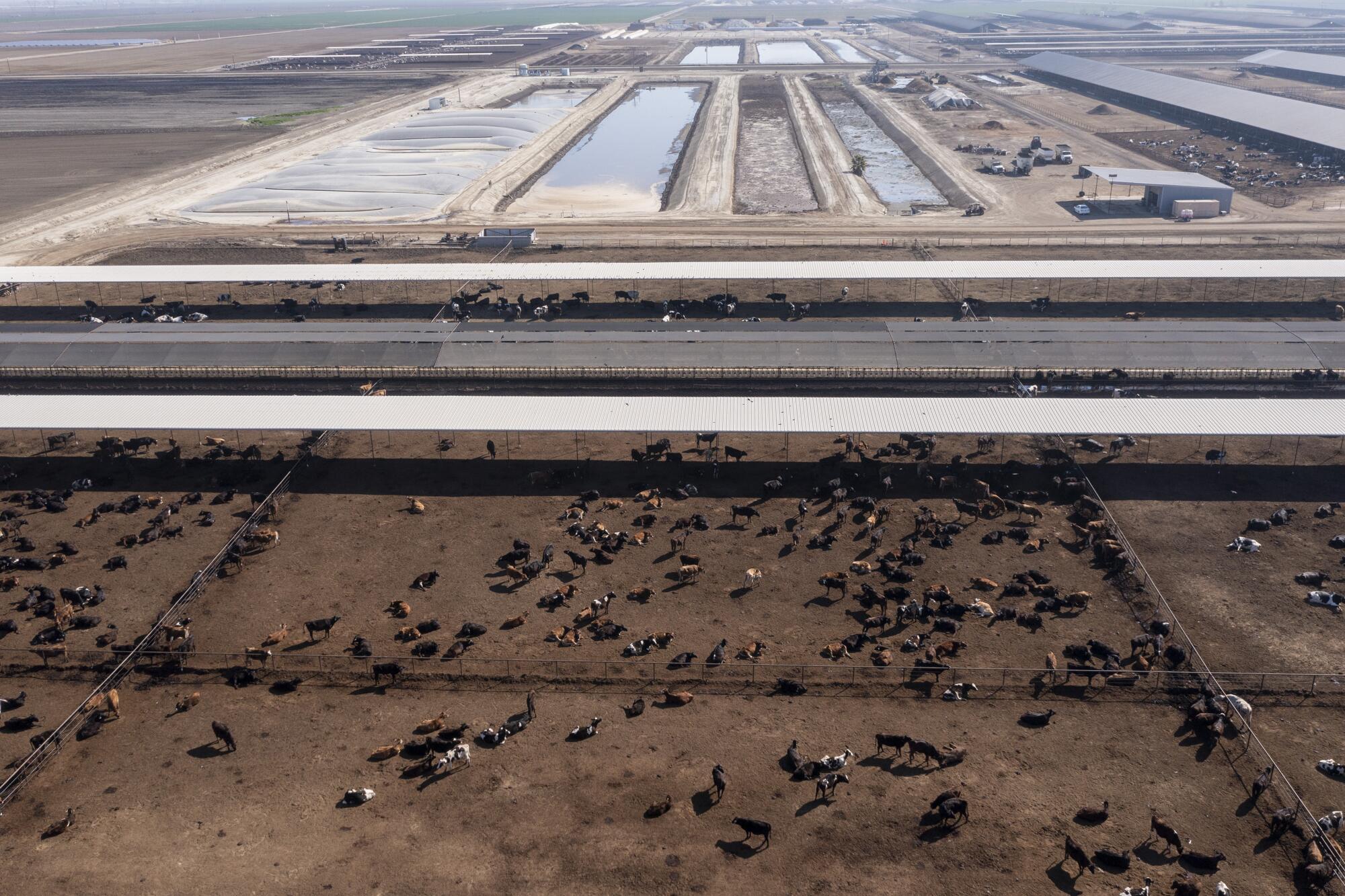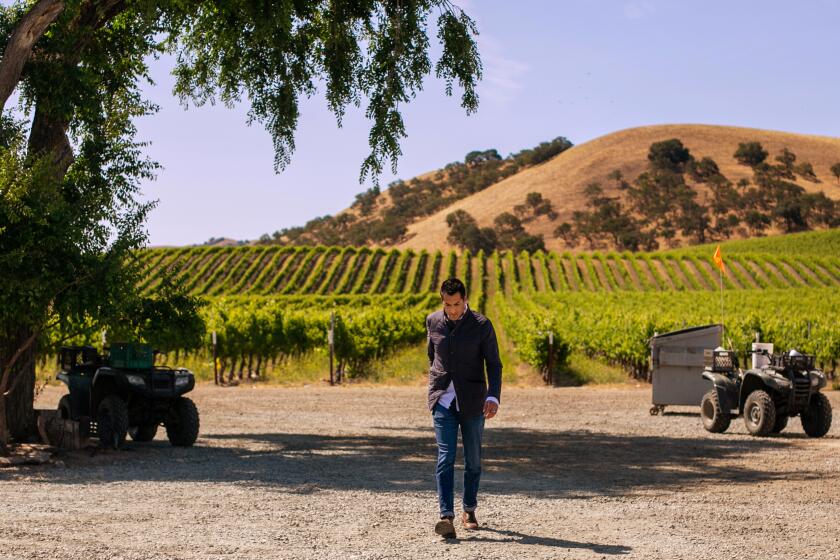
- Share via
During the 2020 presidential election, Donald Trump clinched most of rural America’s votes, including those in California. To explain Trump’s sustained electoral strength, many reached for the now-familiar narrative: Rural Americans voted for Trump because they are poor, angry and feel left behind by the political establishment and educated urban elites.
But our research of rural American life counters these pervasive “left behind” narratives. In fact, many rural areas in California are doing well economically. Also, their vote for Trump is misunderstood. With Trump again a viable presidential contender, politicians, policymakers and the public should shift their lens upon rural areas. A more nuanced approach will better address voter concerns, shape state and federal policies and bridge the deepening urban-rural divide.
When we moved out into the country, we took a shotgun with us and let visitors shoot it for the real “Idaho experience.” Then came a sickening boom in the night.
Rather than dismissing rural Americans and assuming their politics, we ought to take the time to understand these complex communities. Our country’s future depends on it.
But what does “rural” mean? Most folks think of places beyond the city limits, layered with farms, dirt roads and humble main streets. Yet there are dozens of definitions in use by researchers and government agencies, reflecting constantly changing factors like population density, land use and connections to urban economies.
The nature of these classifications means that California’s 13 rural counties are concentrated in the central Sierra, northern Sacramento Valley and Northern California regions, containing roughly 272,000 people, just 0.69% of the entire state’s population. There is not a single officially designated rural county in all of Southern California.
Much of Fresno County may appear to Angelenos as rural with its expansive farmland. However, Fresno has an urban population of about 900,000, meaning the county qualifies as a medium-sized metropolitan area according to the U.S. Department of Agriculture standards. Despite stereotypes, farms require cities to efficiently process and package crops, provide transportation hubs, handle administrative functions and house and entertain the labor force. The size of Central Valley cities like Fresno, Bakersfield and Modesto reflects a developed agricultural economy. They may not look like San Francisco’s version of a city, but few places in the U.S. do.
In addition, “rural” doesn’t necessarily signify poverty. Our analysis of recent census data reveals that rural Californians are substantially more likely than their urban counterparts to own their own home and be employed. Rural California’s unemployment rate is 3% compared with 4.2% for metro areas. Against the backdrop of a housing crisis, homeownership in rural California is more than 70% while just 55% for our cities. And considering the exorbitant cost of city living, the median income for rural counties is reasonably on par with metro counties.
Rural districts face unique challenges as public school enrollment plummets in the Golden State, where funding is tied to attendance.
These findings of surprising rural vitality resemble the rest of the U.S. Rural California diverges, however, in terms of its diversity and education. While rural California is not as diverse as its cities, which are among the most racially diverse in the country, our small towns are 21% Latino compared with just 7% for all rural America. The proportion of rural Californians who are of Asian descent is almost three times as high as elsewhere in rural America. And although not astronomical, 21% of rural Californians possess a bachelor’s degree or above, compared with 18% for the rest of rural America.
Our misperception of rural regions is also reflected in political trends. Although Trump won 10 of California’s 13 rural counties in 2020, the data show that some of these rural margins were razor thin. In Sierra County on the Nevada border, Trump’s margin of victory was just 176 votes. In Northern California’s Trinity County, Trump won by just 59 votes. Meanwhile, there were more Trump voters in Los Angeles County — 1,145,530 — than there are people living in California’s small towns and rural communities. Does this suggest that rural Americans are an irate group who feel economically, culturally and socially left out of the system? Maybe some. But this narrative does not explain the current political divide, nor does it describe most rural folks.
Robert Rivas wants to use small-town charm to wield big political power in California. Will it work?
As the first Assembly speaker in a generation from rural California, Rivas is working to unite Democrats in a Capitol dominated by big-city liberals.
Over the course of the past five years, one of us spoke to dozens of Americans, finding that not only are rural Americans not angry at liberal elites living in cities but that they share many of the same values. When asked about democracy, equality, immigration and other important issues of our time, rural Americans were in line with what their urban counterparts expressed. They conveyed, however, a wariness toward being told what they should think and say.
In California, spatial polarization colors our identity as a state. Our largest cities have reputations as ultra-progressive, diverse enclaves with hugely productive economies. As the narrative goes, our farms, mountains and deserts offer havens to hard-working, conservative Americans who more than anything value their freedom. While an appealing narrative, this urban-rural divide obfuscates as much as it elucidates, severing the essential ties between city and country.
Cities (especially Los Angeles) need food, water, energy and raw materials from our hinterlands to exist. Likewise, rural life is made possible through urban markets and technologies, such as Wi-Fi, air conditioning and automobiles. While there will always be political tension over the allocation of finite resources, Californians — and Americans more broadly — share the same fundamental desires: to be respected, to feel a sense of belonging, to be assured that our opinions matter and are listened to, and to know that we and our cultural capital are not constantly being judged as inferior. These wishes, inconveniently nebulous and hard as they are to grasp, drive our affiliations, loyalties and ultimately our votes, far more than numbers alone can ever show.
Thinking through these basic needs may provide a path to understand our rural communities and their politics both within California and across America.
Elizabeth Currid-Halkett is a professor of public policy at USC, and author most recently of “The Overlooked Americans: The Resilience of Our Rural Towns and What It Means for Our Country.” Marley Randazzo is a doctoral candidate at USC, studying how digital technologies influence urban development and regional spatial structure. @marleyrandazzo
More to Read
A cure for the common opinion
Get thought-provoking perspectives with our weekly newsletter.
You may occasionally receive promotional content from the Los Angeles Times.












